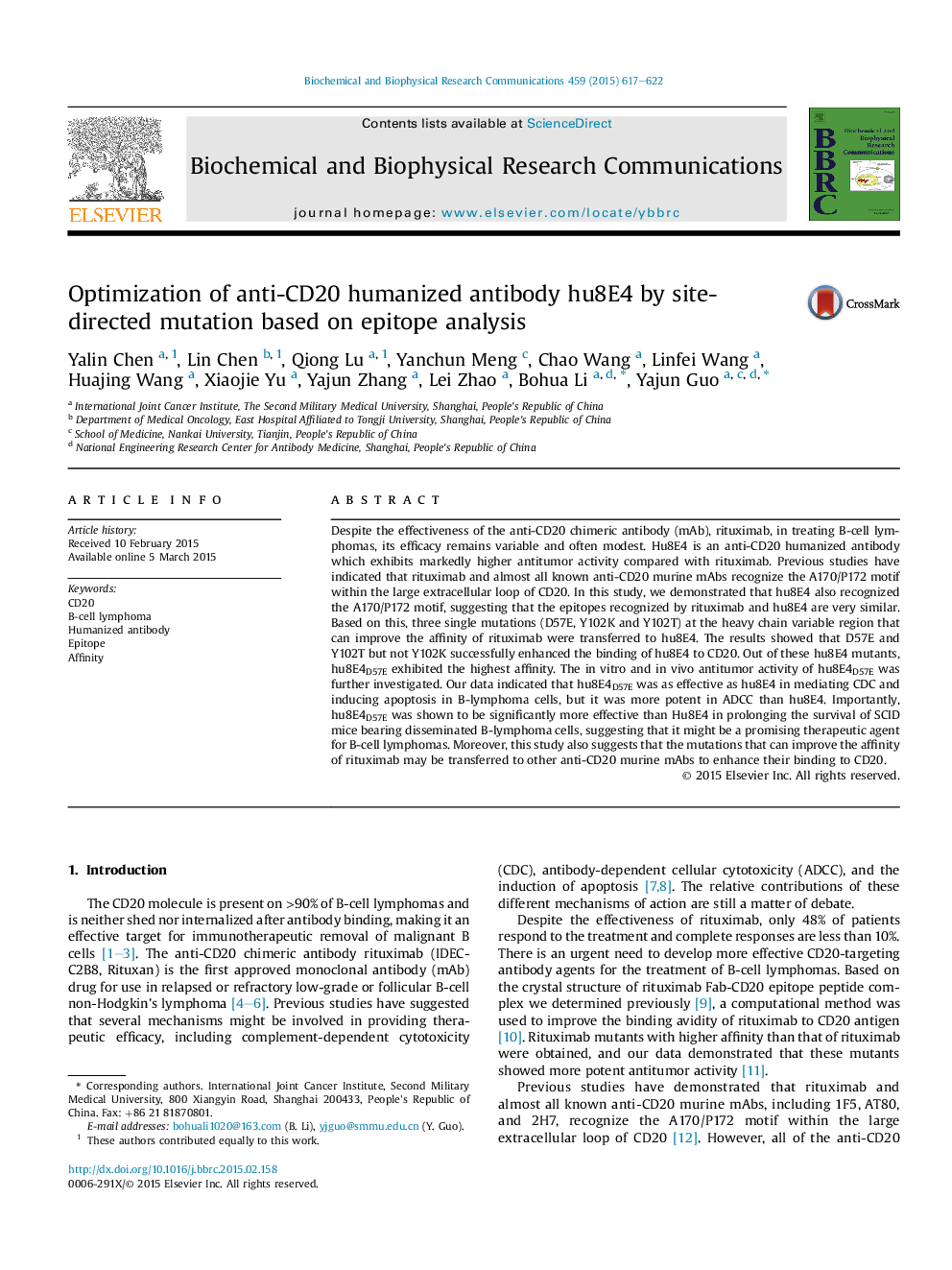| Article ID | Journal | Published Year | Pages | File Type |
|---|---|---|---|---|
| 1928227 | Biochemical and Biophysical Research Communications | 2015 | 6 Pages |
•The anti-CD20 antibody hu8E4 has greater antitumor activity than rituximab.•The epitopes recognized by rituximab and hu8E4 are very similar.•Mutations that can improve the affinity of rituximab were transferred to hu8E4.•D57E and Y102T but not Y102K successfully enhanced the binding of hu8E4 to CD20.•Hu8E4D57E exhibits markedly more potent antitumor activity than that of hu8E4.
Despite the effectiveness of the anti-CD20 chimeric antibody (mAb), rituximab, in treating B-cell lymphomas, its efficacy remains variable and often modest. Hu8E4 is an anti-CD20 humanized antibody which exhibits markedly higher antitumor activity compared with rituximab. Previous studies have indicated that rituximab and almost all known anti-CD20 murine mAbs recognize the A170/P172 motif within the large extracellular loop of CD20. In this study, we demonstrated that hu8E4 also recognized the A170/P172 motif, suggesting that the epitopes recognized by rituximab and hu8E4 are very similar. Based on this, three single mutations (D57E, Y102K and Y102T) at the heavy chain variable region that can improve the affinity of rituximab were transferred to hu8E4. The results showed that D57E and Y102T but not Y102K successfully enhanced the binding of hu8E4 to CD20. Out of these hu8E4 mutants, hu8E4D57E exhibited the highest affinity. The in vitro and in vivo antitumor activity of hu8E4D57E was further investigated. Our data indicated that hu8E4D57E was as effective as hu8E4 in mediating CDC and inducing apoptosis in B-lymphoma cells, but it was more potent in ADCC than hu8E4. Importantly, hu8E4D57E was shown to be significantly more effective than Hu8E4 in prolonging the survival of SCID mice bearing disseminated B-lymphoma cells, suggesting that it might be a promising therapeutic agent for B-cell lymphomas. Moreover, this study also suggests that the mutations that can improve the affinity of rituximab may be transferred to other anti-CD20 murine mAbs to enhance their binding to CD20.
